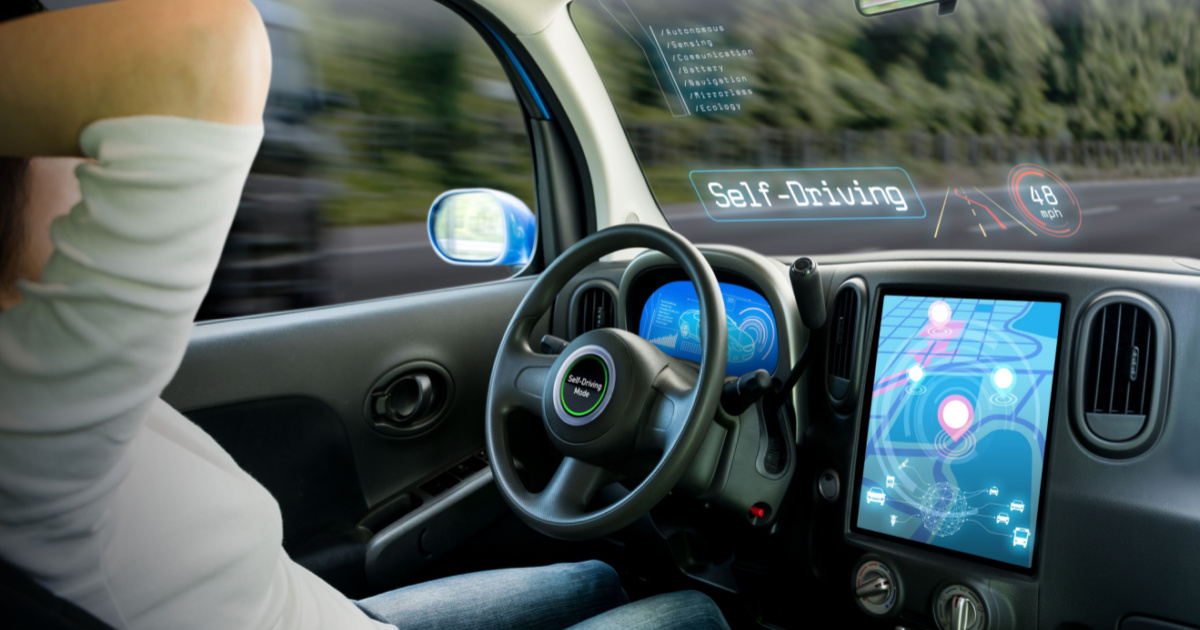Are We There Yet? The Future of Self-Driving Cars

While companies are investing billions of dollars to bring a true autonomous vehicle to the consumer market, today’s drivers are enjoying some cool self-driving technology that is available as either standard equipment or as options on newer cars. You may even be driving one now!
So, the question remains: Does a self-driving car really drive itself? The answer is a bit more complex than the question. Let’s just say that autonomous vehicles may in time give new meaning to the term “back seat driver.”
This month, we explore the latest advancements in self-driving cars and the autonomous features that experts predict will eventually shift autonomous vehicles into the fast lane.
Accelerating into the future
According to the Global Forecast report, the global self-driving car market is expected to grow to 62.4 million units by 2030—up from 20.3 million units in 2021. With revenue projected to reach nearly $326 billion by the end of 2030, the automotive industry is laser-focused on developing driver assistance systems that will pave the way for self-driving cars. Although, fully autonomous vehicles are still years away, some car makers have promised self-driving cars to be available to buy as early as 2024.
What is a self-driving car?
Autonomous vehicles, or self-driving cars, are driven by digital technology and use driverless assistance systems powered by artificial intelligence (AI). With the growing demand for safety as well as environmental factors, this technology is geared toward producing safer cars that can avoid the risk of accidents and help reduce energy consumption—not to mention insurance costs.
Why safety is driving the market
Consumers are all about putting safety first—especially when it comes to their cars. That’s why safety features continue to be a deciding factor when choosing a vehicle. And this safety concern applies not only to drivers in the U.S., but across the globe. The driver support technology of today is designed to help reduce the workload of anyone who operates a car. Were you aware, for instance, that driver error is the cause of over 94 percent of all vehicle accident deaths? To help assist drivers—and reduce the number of accidents—governments across the world have mandated that certain driver support systems be incorporated into cars. These mandated safety features include:
- Lane departure warning (LDW)
- Automatic emergency braking (AEB)
Other popular (but not mandatory) driver support features are:
- Intelligent or adaptive cruise control
- Hands-free capability
Levels of self-driving technology
In order to get a better understanding of where the industry stands on the self-driving car spectrum, the Society of Automotive Engineers (SAE) has broken everything down by sorting the technologies into six levels (from 0-to-5).
Levels 0 – 2: Driver support features
- Level 0: Driver must be present to react to a warning or threat. For example, the car may be equipped with sensors, blind-spot alert system or lane-departure warning but has no self-driving capability.
- Level 1: Driver support technology, such as a lane-keeping system, is considered Level 1 technology. This feature can slightly intervene to help steer the car to the center of a lane.
- Level 2: Level 2 systems are the most sophisticated technology that’s currently sold on cars in the U.S. Although these cars allow drivers to take their hands briefly off the steering wheel, they must keep their eyes focused on the road at all times and be ready to take control of their vehicles immediately.
Levels 3 – 5: Autonomous capabilities
- Level 3: A vehicle ranked at Level 3 can drive itself in a restricted scenario. The driver must be present and ready, however, to take over the controls when prompted.
- Level 4: A vehicle with a Level 4 system can drive itself, but only under “perfect conditions,” such as a fixed loop on known roads. These vehicles may or may not have a steering wheel or pedals. Level 4 rideshare vehicles, such as Waymo’s (formerly Google’s self-driving car project), are in operation with limited use.
- Level 5: A car at Level 5 will be able to drive itself on any road, in any conditions—and without any restrictions. To date, this car exists only in theory.
Are you revved up about self-driving cars? Pursuing an engineering degree at Vaughn College is a great start to find a career as an engineer in this exciting and futureproof industry. There are many engineering occupations related to the development of self-driving cars including:
- Electrical engineer: works with anything involving electricity in the car
- Mechanical engineer: works with vehicle mechanics and design
- Robotics engineer: works on robots that power the car and integrated technologies
- Validation engineer: works to test and validate the computing platforms
- Sensor system engineer: works with sensor systems such as radar, lidar, GPS, sonar and cameras
- Systems engineer: maintains wireless and aerospace satellite communication systems and cloud computing systems
- Computer programmer: writes and tests computer programming code
Professionals in the self-driving car industry require strong mathematical, analytical and computer engineering skills and there’s great earning potential. Many companies around the world are actively working on autonomous vehicle technology such as Waymo, General Motors, Mercedes-Benz, Tesla, Ford, BMW and Toyota.
You can also check out our blog, “Engineering Ranked Among Most Valuable College Majors” to discover even more possibilities of a Vaughn engineering degree. Apply today!

